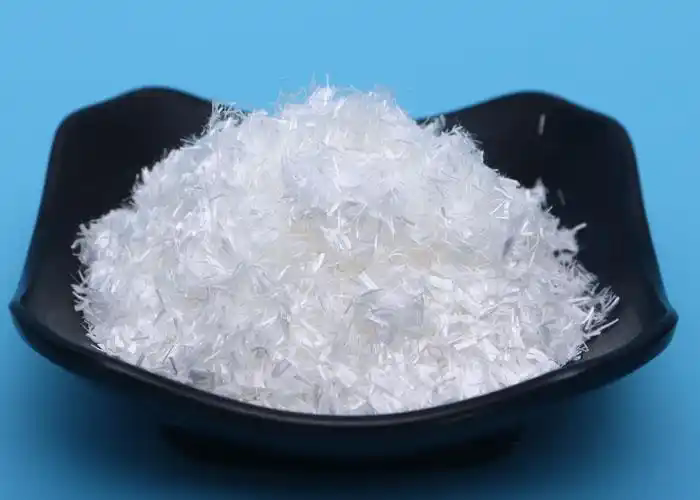SKIN MOISTENING AND MOISTURIZING YARN CONTAINING SHEA BUTTER
680SKIN MOISTENING AND MOISTURIZING YARN CONTAINING SHEA BUTTER
View detailsSearch the whole station
In the field of nonwoven fabric manufacturing, bicomponent fibers, with their unique structure and properties, have become an extremely promising material. Particularly, the bicomponent fibers made of polyethylene (PE) and polypropylene (PP) exhibit many unique advantages in the production of spunbond nonwovens. The outer layer of PE melts during the thermal bonding process and forms a network through adhesion, while the inner layer of PP remains in the fiber structure. This characteristic endows bicomponent fibers with numerous unique advantages in the production of spunbond nonwovens.
Bicomponent fibers have a unique structure with an outer layer of polyethylene (PE) and an inner layer of polypropylene (PP). This sheath-core structure endows the fibers with unique properties. PE has a relatively low melting point (initial melting point of 130°C and final melting point of 175°C), which allows it to melt quickly at lower temperatures and form bonding points to tightly connect the fiber network. Meanwhile, PP, with a higher melting point, maintains the structural integrity of the fibers during the thermal bonding process, providing the nonwoven fabric with the necessary mechanical strength and toughness.
During the production of spunbond nonwovens, the outer layer of PE in bicomponent fibers melts at lower temperatures, rapidly forming bonding points that tightly connect the fiber network. This efficient bonding not only increases production efficiency but also reduces the reliance on high-temperature equipment, lowering energy consumption. Moreover, the melting process of PE can be evenly distributed throughout the fiber network, forming uniform bonding points and thereby enhancing the overall strength and uniformity of the nonwoven fabric.
The inner layer of PP in bicomponent fibers remains in the fiber structure during the thermal bonding process. This characteristic ensures that the nonwoven fabric maintains high mechanical strength and toughness after thermal bonding. The high strength and toughness of PP fibers effectively resist tensile and tearing forces, thereby enhancing the durability of the nonwoven fabric. In addition, the fiber structure of PP also provides the nonwoven fabric with good breathability and softness, making it more comfortable to use.
Since PP fibers maintain their structural integrity during thermal bonding, bicomponent fibers can effectively reduce the thermal shrinkage of nonwoven fabrics. During the thermal bonding process, the melting and bonding action of PE tightly connects the fiber network, while PP fibers provide dimensional stability, ensuring the dimensional accuracy of the nonwoven fabric. This characteristic is particularly important for the production of high-precision nonwoven products, such as medical protective clothing and high-end filtration materials.
In the production process of bicomponent fibers, both PE and PP are common polymer materials with good environmental performance. The melting process of PE does not release harmful substances, and the structural stability of PP fibers also reduces fiber breakage and shedding, thereby reducing environmental pollution. In addition, the low oil content (0.3%) and low moisture regain (0.18%) of bicomponent fibers further enhance their environmental performance, making them more in line with environmental requirements in nonwoven production.
In the medical protective field, the efficient bonding performance and dimensional stability of bicomponent fibers make them an ideal material for producing medical protective clothing and masks. The melting of PE forms a tight fiber network that effectively blocks the penetration of bacteria and viruses, while PP fibers provide the necessary mechanical strength and toughness to ensure that protective clothing and masks do not tear or deform during use. Moreover, the breathability and softness of bicomponent fibers also enhance the comfort of medical protective products, making them more suitable for long-term wear.
Bicomponent fibers also have a wide range of applications in the field of filtration materials. Their efficient bonding performance and dimensional stability can form a uniform fiber network that effectively blocks the passage of particulate matter. The melting of PE forms tiny pores, while PP fibers provide a supporting structure to ensure the stability of the pores. This structure enables bicomponent fibers to perform well in air and liquid filtration materials, effectively improving filtration efficiency and service life.
In the hygiene products field, the softness and breathability of bicomponent fibers make them an ideal material for producing sanitary napkins, diapers, and other products. The melting of PE forms a soft fiber network that provides good absorption performance, while PP fibers provide the necessary mechanical strength and toughness to ensure that the products do not tear or deform during use. In addition, the low oil content and low moisture regain of bicomponent fibers also enhance the comfort and safety of the products.
Bicomponent fibers, with their unique structure and properties, exhibit significant advantages in the production of spunbond nonwovens. The efficient bonding performance of the outer PE layer and the integrity of the inner PP fiber structure not only increase production efficiency and product quality but also meet the performance requirements of nonwovens in various application scenarios. With the continuous advancement of technology and the increasing market demand, the application prospects of bicomponent fibers in the field of spunbond nonwovens will be even broader.



SKIN MOISTENING AND MOISTURIZING YARN CONTAINING SHEA BUTTER
View detailsUltra-low Temperature Easy-to-set Elastane
View details
HelloPlease log in